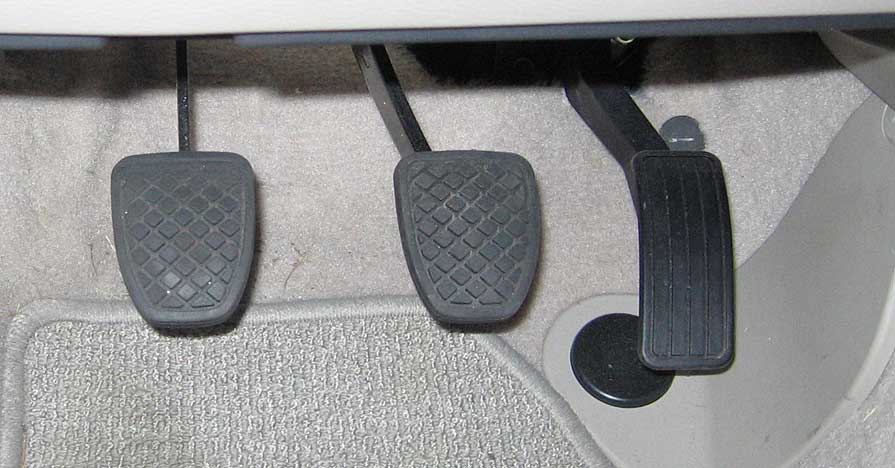One of the most basic functions of a car is to produce power and move forward. However, it’s equally, if not more important, for a vehicle to be able to stop. That’s why the brakes are a critical part of the car and why you must know what to do when you discover your brake pedal not working.
A brake pedal can fail by sinking to the floor without much resistance or becoming stiff and too hard to push. Either way, you must remain calm if it happens while driving. Reduce your car's speed by switching to lower gears and gradually applying the parking brake. Then, pull over safely and get your car towed to a repair shop.
A failing brake pedal can be a nightmare scenario for any driver unprepared for it. Read this guide until the end to manage your risks and concerns by reacting correctly and stopping your car safely.
How Do I Know If My Brake Pedal Is Not Working?
Firstly, it’s important to understand what it means when your brake pedal isn’t working. That’s because the pedal, and the braking system as a whole, can fail in several different ways.
The two situations you must quickly recognise as brake failure are:
- When the brake pedal sinks to the floor: The first way you know your brake pedal isn’t working correctly is when it’s too soft. In other words, the brake pedal sinks a lot deeper than usual, sometimes all the way down to the floor when you step on it.
- When you find the brake pedal hard to push: The brake pedal also isn’t working when the opposite happens, that is, when the pedal is far too hard to push down.
Both scenarios above happen for different reasons. For example, a sinking brake pedal typically occurs because of a leak in the anti-lock braking system (ABS) unit or leaking brake fluid. As a result, the system loses pressure, and the pedal sinks to the floor.
On the other hand, a brake pedal that’s too hard to push could be due to a failed pump or a missing serpentine belt.
Whatever the case, you must have your car towed to a workshop when the brake pedal isn’t working correctly.
What Do You Do If The Brake Pedal Fails While Driving?
All drivers should understand the general reasons their brake pedal might fail. But more importantly, you must know what to do if the pedal fails while driving.
That’s right! It’s one thing if the pedal fails while the car is parked, but it’s incredibly hazardous if it happens while the vehicle is mobile.
Whether your brake pedal sinks to the floor or becomes excessively stiff while driving, here are the emergency steps you must take:
Step 1: Eyes on the Road
A brake pedal that suddenly stops working can be incredibly distracting. That’s especially true when you step on the pedal, yet it doesn’t respond correctly.
Remember: your car is still moving. So, you must focus on the road, take a deep breath, and assess the situation.
Putting on your hazard lights is also an excellent idea, as it warns drivers behind you that you’re in a bit of trouble.
Once you regain your bearings and accept that your brake pedal has failed, you can take corrective steps as smoothly as possible.
Step 2: Pump the Brakes
Suppose your pedal is soft and sinking to the floor, in that case, your brake system leaks and suffers from a lack of pressure inside.
One thing you can do is pump the brake pedal continuously. Doing so helps to build at least some pressure in your brake system.
The hope is that pumping the brakes will create enough pressure to reduce your car’s speed, at least by a little.
Step 3: Shift to Lower Gear
As you go through this process, your top priority is to reduce your vehicle speed as much as possible. Another way you can do that is to shift to lower gears gradually.
Whether in an automatic or manual transmission vehicle, shifting to a lower gear will force the car to slow down. That's because each lower gear reduces the transmission's output speed while increasing torque.
So, not only will that slow your car down, but it’ll also increase your control over your car.
Step 4: Apply the Parking Brake Gradually
Another step to reduce your vehicle's speed is gradually applying the parking brake.
The parking brake operates using a different mechanism than your driving brakes, typically consisting of cables connected directly to the wheels.
That means the failed brake pedal doesn’t affect your parking brake, so you can apply it by gradually pulling its lever.
Step 5: Pull Over to the Side
As you lower your car’s speed, your focus must be on safely pulling your vehicle over to the side of the road.
Once you’re safe, you must call a tow truck to bring your vehicle to a workshop. Driving a car without fully-functional brakes is out of the question, as it’s too dangerous for you and other road users.
Final Thoughts
Although this should go unsaid, it's worth repeating: Your brakes are your vehicle's most important safety feature. So, if the brake pedal stops working – even temporarily – you must get the car to a workshop immediately.
Your brakes are the one part of your car you don’t want to take for granted. Not only do bad brakes put you and your passengers at risk, but they also endanger pedestrians and other road users.
So, do the right thing and get it sorted out immediately!
Not sure where to go when you find your brake pedal hard to push or sinking to the floor? Check out the Directory at CarpartAU. There, you can find nearby workshops where you can bring your car for immediate brake diagnosis and repairs!
By Ray Hasbollah

